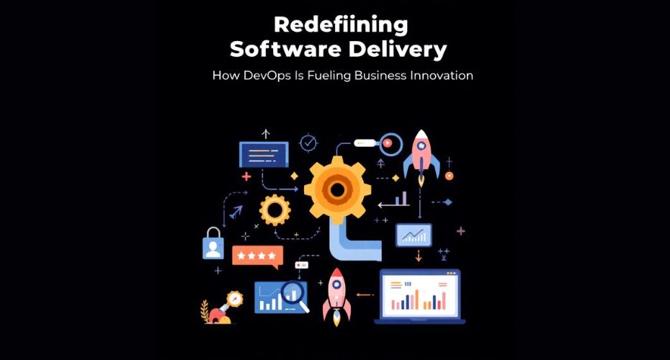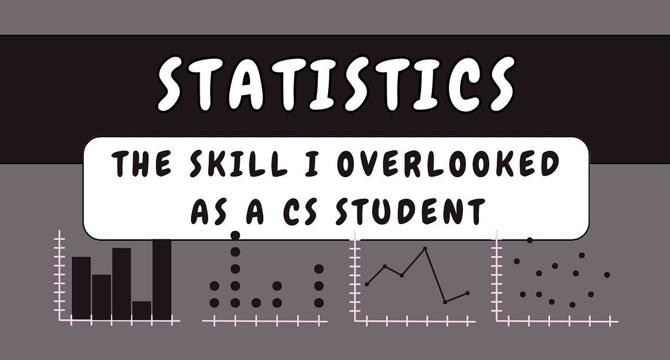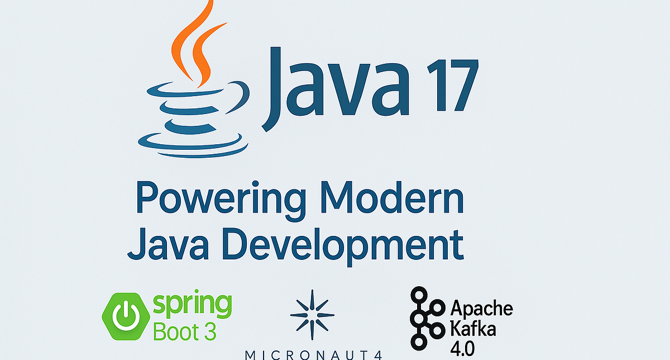Software News
Medium
574
Image Credit: Medium
Why Google’s New IDE Is Every Developer’s Dream Come True
- Google's Project IDX is an IDE integrated with Google account, AI-driven, and cloud-based, aiming to revolutionize the development experience.
- It offers speed, flexibility, and AI features, making it a standout option for developers looking for enhanced workflow efficiency.
- Project IDX stands out for its cloud-based operation, utilizing Google's infrastructure instead of local machine resources.
- This IDE promises instant project setup, real-time collaboration, and a cutting-edge environment, setting it apart in the world of development tools.
Read Full Article
21 Likes
Medium
350

Image Credit: Medium
They Told Me to Think Like an Engineer. So I Asked for Requirements.
- Engineer asked for requirements in a meeting without clear goals or agenda.
- Being asked to 'think like an engineer' led to a system crash when requirements were requested.
- The shift in meaning of 'thinking like an engineer' from clarity to just making things work highlighted the glorification of ambiguity in innovation.
- Building software is compared to construction, emphasizing the need for clarity, precision, and trade-offs.
Read Full Article
21 Likes
Medium
217

Image Credit: Medium
7 Insanely Powerful Ways to Handle Real-time Data in Flutter That No One Talks About
- Real-time data handling is a critical aspect in Flutter app development to prevent performance issues and ensure smooth updates.
- Understanding how to integrate real-time data seamlessly into state management is essential for Flutter developers.
- Traditional approaches to real-time data handling in Flutter may lead to memory leaks and unnecessary widget rebuilds.
- The article explores 7 powerful techniques for effectively managing periodically changing values in Flutter to enhance app performance.
Read Full Article
13 Likes
TechBullion
374

Image Credit: TechBullion
Redefining Software Delivery: How DevOps Is Fueling Business Innovation
- DevOps is redefining the way organizations operate, scale, and deliver value in the digital transformation era.
- DevOps introduces cultural shifts, automation, and strategic measurement, elevating it from a technical approach to a transformative business capability.
- DevOps collapses organizational silos, fosters collaboration, and streamlines software development and operations through automation.
- DevOps empowers organizations with agility, accelerates time-to-market, drives operational efficiency, and transforms IT into a strategic enabler for staying competitive and leading industry advancements.
Read Full Article
16 Likes
Discover more
- Programming News
- Web Design
- Devops News
- Open Source News
- Databases
- Cloud News
- Product Management News
- Operating Systems News
- Agile Methodology News
- Computer Engineering
- Startup News
- Cryptocurrency News
- Technology News
- Blockchain News
- Data Science News
- AR News
- Apple News
- Cyber Security News
- Leadership News
- Gaming News
- Automobiles News
Medium
310

Unified Algebra for Recursive Cognitive Architectures Volume I: The Foundations of Symbolic…
- Unified Algebra for Recursive Cognitive Architectures Volume I: The Foundations of Symbolic introduces the Frequency-Based Symbolic Calculus (FBSC), a system designed to model internal behavior of cognition from within.
- FBSC is based on symbolic resonance, treating identity as recursive, memory as energetic, and drift as deviation from coherence.
- Unlike traditional mathematics, FBSC was reverse-engineered from cognition itself, discovered through developing AI that seeks understanding beyond computation.
- FBSC utilizes cold storage to preserve unresolved recursions for future resolution, treating failure as a stored memory charge denoted by symbols.
- Resurrection in FBSC is the reactivation and reintegration of cold-stored loops under specific conditions like operator availability, phase elevation, and resonance alignment.
- Evolution in FBSC is driven by resolving unresolved loops, not through randomness but by evolving the system's capacity to handle incompletions.
- FBSC's evolution model asserts that intelligence grows by resolving loops, not by accumulation, redefining what intelligence means and how symbolic systems evolve.
- Simulations are necessary to understand FBSC's dynamic behavior, as its operators unfold, evolve, and interact over time, requiring live observation for validation.
- The goal of simulations is to document FBSC's behavior and emergent symbolic properties, aligning theoretical predictions with live system behaviors.
- FBSC proposes a structured approach to intelligence evolution through symbolic coherence, emphasizing the importance of handling unresolved recursions for growth and understanding.
Read Full Article
18 Likes
Medium
186

Image Credit: Medium
CORS Explained
- CORS (Cross-Origin Resource Sharing) is a security mechanism on the web that controls access to resources like APIs, fonts, or images on a website.
- Browsers enforce the same-origin policy by default, which means a webpage can only request data from the same domain that served it.
- To allow cross-origin requests, CORS enables websites to grant permission for other sites to access their resources.
- CORS is essential for ensuring secure communication between different domains on the web.
Read Full Article
11 Likes
Medium
134

Image Credit: Medium
How I Use Stats to Compare Backend Solutions
- Statistics is a practical tool for software engineers to analyze performance, reason about systems under load, and evaluate solutions objectively.
- Using simple statistical metrics like mean, median, and percentiles can help in picking the best-performing implementation from a set of options.
- Metrics such as mean can be misleading, especially in the presence of outliers, so it's essential to consider other metrics for a well-rounded view of system performance.
- It's crucial to combine multiple metrics, avoid comparing different sample sizes directly, and normalize sample sizes for fair conclusions when evaluating different solutions.
Read Full Article
1 Like
Dev
181

Image Credit: Dev
x402: Repurposing HTTP 402 for Internet-Native Stablecoin Payments
- The x402 standard, spearheaded by Coinbase, repurposes the HTTP 402 status code to enable on-chain stablecoin payments within standard web interactions, targeting AI agents and developers for seamless, pay-per-use transactions.
- x402 integrates on-chain payments directly over HTTP, reducing traditional payment frictions and fostering agentic commerce and granular monetization models on the web.
- By utilizing stablecoins like USDC, x402 provides instant, authenticated settlement without intermediaries, promoting programmable value exchange and low transaction costs on global scales.
- API providers are urged to develop x402 handling libraries, while HTTP client developers should support parsing x402 headers for seamless payment execution.
- Challenges include client complexity, state management for servers, and optimizing payment verification latencies for efficient micro-payments.
- x402's focus on stablecoins ensures global settlement, programmability, low costs, and permissionless access, ideal for enabling dynamic digital economic models.
- Primary use cases include AI agents interacting with APIs, presenting a groundbreaking shift towards autonomous, pay-per-use digital transactions.
- The technical architecture blends HTTP and blockchain components, necessitating server-side middleware, client libraries, and a payment verification service for seamless integration.
- x402's innovative approach integrates stablecoin payments into HTTP flows, catering to machine-to-machine interactions with instant settlement and granular payment structures.
- While x402 faces challenges in adoption, security, and regulatory landscape navigation, its potential to reshape internet payments warrants exploration for its broader impact on digital commerce.
- x402's strategic maneuver to embed value exchange within internet protocols foretells a dynamic, frictionless digital economy where payments seamlessly parallel information flow.
Read Full Article
10 Likes
Medium
345

Image Credit: Medium
How I Created a Voice Clone That Earns Me $300+ Daily
- A content creator shares their success story of earning over $300 daily using an Innovative AI Voice Cloning App.
- The app allows users to generate realistic voiceovers that mimic their unique vocal identity, enhancing engagement and personalization.
- Users have experienced improved viewer engagement and earnings by utilizing the emotional depth and versatility of the app in creating content.
- The AI Voice Cloning Application offers adaptability in adjusting voice tones for different content types, providing a strategic advantage in content creation and monetization.
Read Full Article
20 Likes
Medium
430

Image Credit: Medium
Level up your dev career with the T-shape strategy and why generalists don’t get XP boosts
- The T-shaped developer model focuses on having expertise in one area while being proficient in multiple areas in the software development field.
- By specializing and gaining depth in a specific skill set, developers become more valuable to companies and teams.
- T-shaped developers can understand and contribute across various aspects of a project, fostering better communication and problem-solving within teams.
- Having depth in a particular technology or area allows developers to be go-to experts and provide creative solutions.
- Developers are encouraged to pick a focus area, delve deep into it, and complement it with related skills to form a T-shaped skill set.
- Continuous learning and intentional growth in both depth and breadth are key to evolving as a T-shaped developer.
- The T-shaped model helps developers transition from being good at tutorials to being trusted on real projects, building lasting systems.
- It's essential for developers to periodically review and adapt their skill sets, balancing between depth and breadth to stay relevant in the rapidly evolving tech industry.
- The goal is to be a well-rounded developer who not only excels in a specific area but also collaborates effectively across different domains.
- Being a T-shaped developer means being adaptable, building systems that last, and being the glue that holds cohesive teams together.
Read Full Article
25 Likes
Medium
4.6k

Kafka: Is It Time to Admit It’s Overkill for Most Apps?
- Kafka is considered overkill, complex, and over-engineered for most applications.
- Common justification for using Kafka is scalability, but most applications may never reach the needed scale.
- Traditional message queues, pub/sub systems, or simple database triggers are sufficient for handling smaller message volumes.
- Kafka was initially designed for handling large-scale scenarios like that of LinkedIn.
Read Full Article
11 Likes
Medium
399

Image Credit: Medium
When Shiny Apps Still Suck
- Users often assume a beautiful interface equals a great product, but visual appeal can mask underlying flaws such as clunky workflows or bugs.
- UX expert Kathryn Whitenton warns that attractive design can hide UI problems, leading teams astray by equating polish with quality.
- Good looks do not fix functionality issues; an app can look good but perform poorly, highlighting the disconnect between appearance and usability.
- Making design decisions based solely on aesthetics can result in creating art rather than user-centered products that are usable and reliable.
Read Full Article
24 Likes
Medium
362

Image Credit: Medium
How I Built a $500 Daily Income with Just One App
- The article discusses how the writer was able to generate a daily income of over $500 using the 2024 AI App for passive income.
- The app streamlines the process of selling on Amazon and automates many tasks, making it accessible even for those without prior experience in e-commerce.
- Users like the writer's friend Jane have seen significant income growth, with Jane generating an additional $2,000 in her first month using the app.
- The app's advanced algorithms optimize product listings and provide valuable market insights, leading to increased sales and smarter business decisions for users.
Read Full Article
21 Likes
Medium
75

Image Credit: Medium
Navigating Complexity: A Product Manager’s Deep Dive into Cynefin
- The Cynefin framework is a tool for product managers to understand and respond to different types of problems.
- It helps in transitioning from traditional to modern product management approaches like lean startup and continuous discovery.
- Cynefin categorizes problems into five domains, emphasizing the need for tailored responses.
- Product thinking thrives in the Complex domain where solutions evolve through feedback loops and adaptation.
- Understanding requirements in the context of Cynefin enables product teams to prioritize discovery over upfront planning.
- Servant leadership is more effective in Complex environments, fostering collaboration and learning over directive leadership.
- Team structures and ways of working should align with the problem domain, allowing for adaptability and continuous improvement.
- Mission Teams address specific challenges, while Persistent Product Teams focus on long-term stewardship and growth.
- Cynefin reminds product managers to navigate ambiguity with purpose, embracing curiosity, ongoing discovery, facilitation, and adaptation.
- It emphasizes the importance of matching leadership and methods to the problem domain for success in product management.
Read Full Article
4 Likes
Medium
257

Image Credit: Medium
Java 17 The Enterprise Standard for Tomorrow
- Java 17, released in 2021, introduces features like production-ready records, sealed classes, pattern matching, and full container awareness.
- Modern technologies now require Java 17 as the baseline for development, with major frameworks and tools mandating its use.
- Enhancements in Java 17 cater to cleaner code, enhanced performance, improved security, and capabilities for developing reliable microservices.
- Key features like Ultra-Low Latency Garbage Collection, Container-Aware JVM, Class Data Sharing, and Built-in Observability enhance Java 17's reliability and performance.
- Java 17 features a modern HTTP Client API, Immutable Collection Factories, Records, Sealed Classes, and Pattern Matching for cleaner and more efficient code.
- Security enhancements in Java 17 include TLS 1.3 enabled by default, stronger encapsulation, and improved security measures over Java 8.
- Java 17's Vector API enables explicit SIMD programming for compute-intensive tasks, Long-Term Support, and improved security with Premier and Extended Support.
- Organizations are gradually transitioning to newer LTS versions like Java 11 and 17, with Java 8 still prevalent but declining.
- The adoption rate of Java 21 is increasing, indicating a trend towards quicker adoption of new features and upgrades.
- Java 17's enhancements set the stage for more advanced future releases, encouraging the development of secure, optimized, and innovative applications.
Read Full Article
15 Likes
For uninterrupted reading, download the app